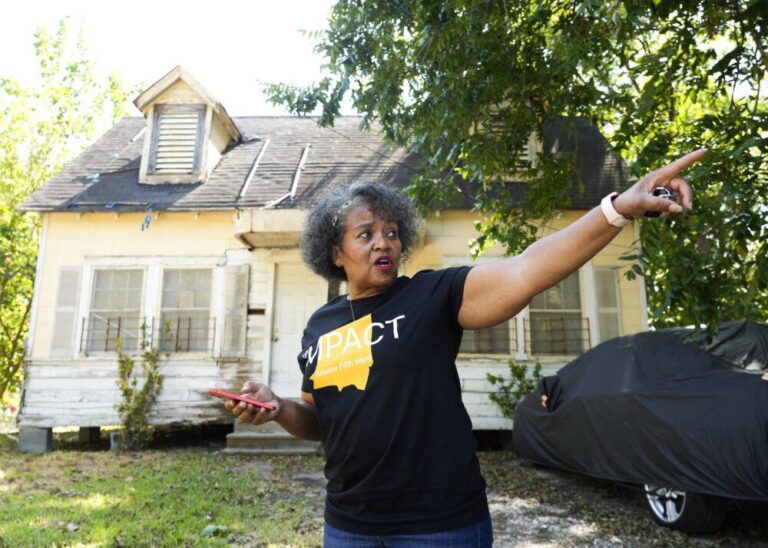HoustonŌĆÖs Environmental Justice Movement: Black Women Championing Change Amid Pollution and Gentrification
Empowering Leadership: Black Women Driving Environmental Justice in HoustonŌĆÖs Vulnerable Communities
Within HoustonŌĆÖs historically underserved neighborhoods, Black women are emerging as pivotal leaders in the fight against environmental injustice. Rooted deeply in their communities, these women have transformed personal adversity into collective activism, challenging industrial contamination and advocating for fair urban development policies. Their leadership uniquely combines a passionate commitment to environmental health with a steadfast resistance to the displacement pressures fueled by gentrification.
Their grassroots initiatives encompass:
- Hosting educational forums to raise awareness about environmental hazards and health consequences.
- Engaging with municipal authorities to enforce stricter pollution controls and hold corporations accountable.
- Building coalitions with national environmental justice groups to strengthen advocacy efforts.
- Elevating community narratives through storytelling, demonstrations, and media outreach.
| Community | Primary Concern | Leading Group | Recent Achievements |
|---|---|---|---|
| South Union | Industrial emissions | East End Environmental Network | Shutdown of diesel power facility |
| Third Ward | Air pollution surveillance | Houston Green Sisters | Deployment of new air quality monitors |
| FreedmenŌĆÖs Town | Threat of displacement | Roots & Resistance | Establishment of a community land trust |
Health Consequences of Pollution in HoustonŌĆÖs Most Contaminated Neighborhoods
Residents in HoustonŌĆÖs most polluted areas face relentless exposure to hazardous substances, resulting in significant health disparities. Elevated concentrations of toxins such as benzene, fine particulate matter, and heavy metals contribute to higher incidences of respiratory diseases, cancers, and cardiovascular conditions. Black women, often the primary caregivers and household anchors, are disproportionately vulnerable due to extended time spent in affected environments and systemic barriers to healthcare access. These health challenges are deeply intertwined with a legacy of environmental racism, forcing communities to fight for fundamental rights like clean air and safe living conditions.
Prominent health issues linked to pollution in these neighborhoods include:
- Persistent respiratory ailments such as chronic bronchitis and asthma
- Complications during pregnancy and elevated infant mortality rates
- Increased prevalence of various cancers
- Insufficient mental health support exacerbating stress and trauma
| Contaminant | Associated Health Effects | Exposure Rate (%) |
|---|---|---|
| Benzene | Blood cancers and disorders | 65% |
| Fine Particulate Matter (PM2.5) | Asthma and chronic lung disease | 78% |
| Lead | Neurological impairments | 42% |
| Mercury | Kidney and cognitive dysfunction | 35% |
GentrificationŌĆÖs Dual Threat: Displacement Amid Environmental Challenges
As investment surges and property values climb in HoustonŌĆÖs most polluted districts, long-established residentsŌĆöpredominantly Black womenŌĆöface a dual crisis. They confront not only ongoing environmental hazards such as industrial pollutants and contaminated water sources but also the accelerating forces of gentrification that jeopardize their cultural heritage and community stability. This paradox reveals a harsh truth: improvements in environmental conditions often coincide with increased displacement risks.
Residents grapple with several pressing issues, including:
- Escalating rents and property taxes driven by new developments
- Insufficient healthcare services tailored to pollution-related illnesses
- Pressure to relinquish ancestral homes to external investors
- Exclusion from meaningful participation in urban planning and policymaking
| Impact Metric | Pre-Gentrification | Post-Gentrification |
|---|---|---|
| Median Rent | $700/month | $1,200/month |
| Air Quality Index (AQI) | 210 (Hazardous) | 130 (Unhealthy for Sensitive Groups) |
| Resident Displacement Rate | 5% | 25% |
Strategic Policy Reforms and Community Initiatives to Safeguard At-Risk Neighborhoods
Resolving the entrenched environmental and social challenges in HoustonŌĆÖs most affected neighborhoods demands a comprehensive, equity-focused strategy. Advocates call for robust policy reforms such as enforcing stricter environmental standards for industrial operations near residential areas, increasing investment in community health infrastructure, and implementing transparent pollution monitoring systems that provide real-time data. These efforts aim to both remediate existing damage and prevent further harm amid ongoing gentrification pressures.
Community-led approaches play a vital role in this endeavor, emphasizing:
- Forming neighborhood coalitions to strengthen representation in city planning forums
- Ensuring affordable housing options to protect long-term residents from displacement
- Conducting public education campaigns on environmental risks and available health services
- Collaborating with academic institutions for independent environmental assessments
| Policy Proposal | Community Impact | Implementation Timeline |
|---|---|---|
| Industrial buffer zones | Lowered exposure to harmful pollutants | 12-18 months |
| Tenant protection legislation | Enhanced housing security and affordability | 6-12 months |
| Community health centers | Expanded access to medical care | Ongoing |
Conclusion: The Indispensable Role of Black Women in HoustonŌĆÖs Environmental Justice Movement
As HoustonŌĆÖs historic Third Ward and surrounding neighborhoods confront the intertwined crises of environmental contamination and rapid gentrification, Black women continue to lead with resilience and determination. Their advocacy underscores the critical need for urban policies that simultaneously address pollution and displacement, recognizing that environmental justice and social equity are fundamentally linked. The ongoing efforts in these communities serve as a powerful call to action for policymakers, activists, and residents committed to fostering healthier, more inclusive cities.




